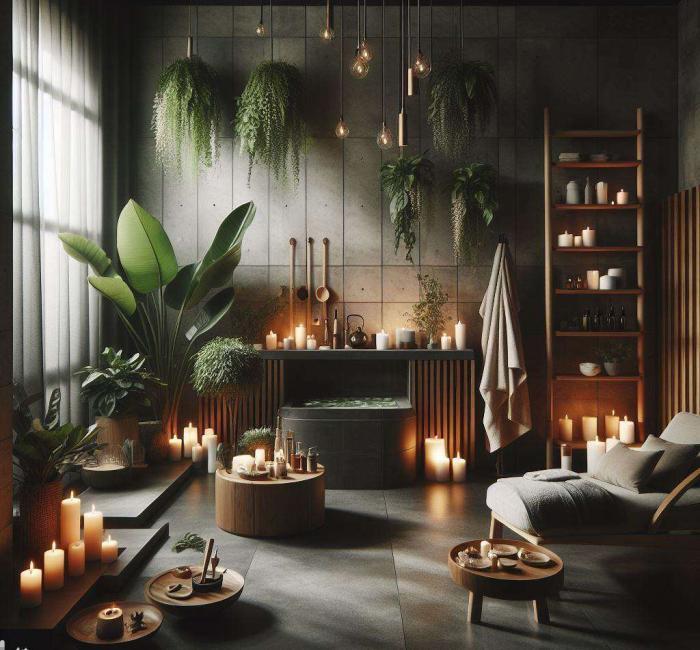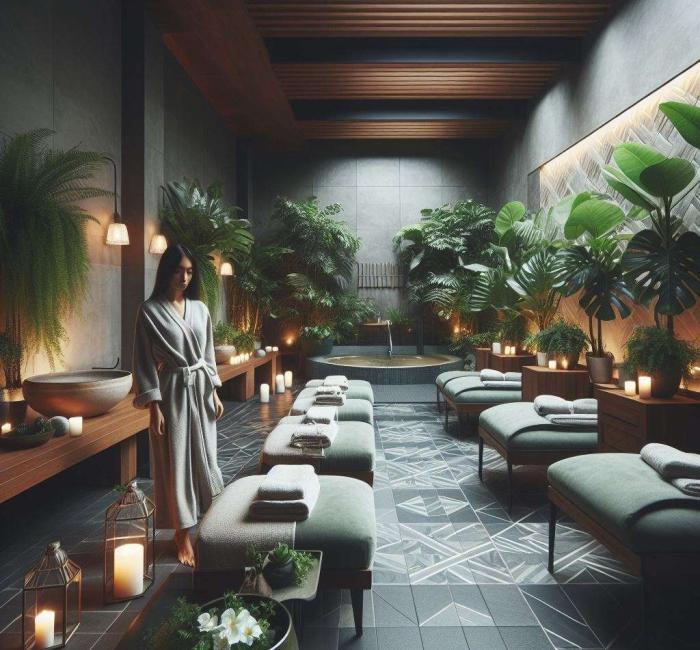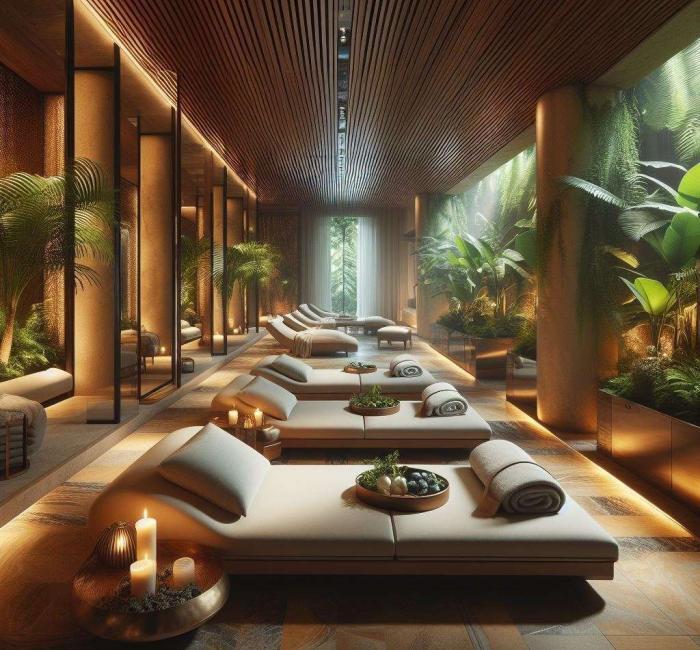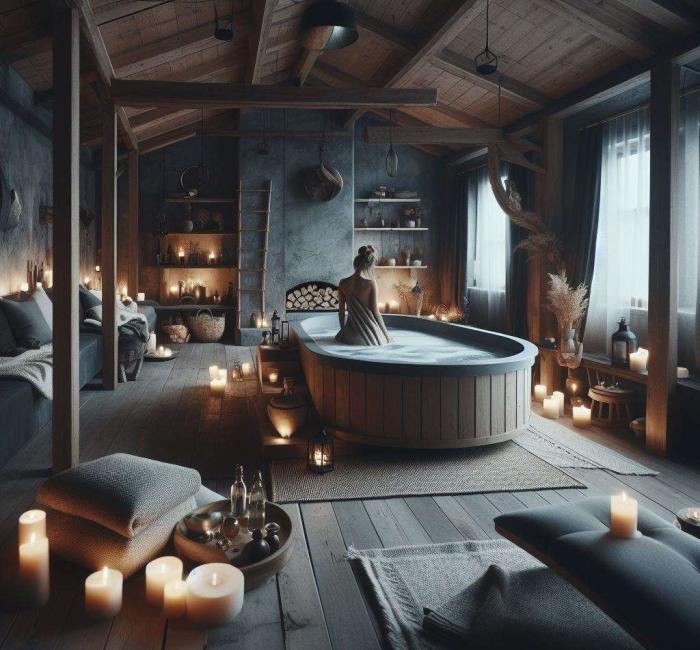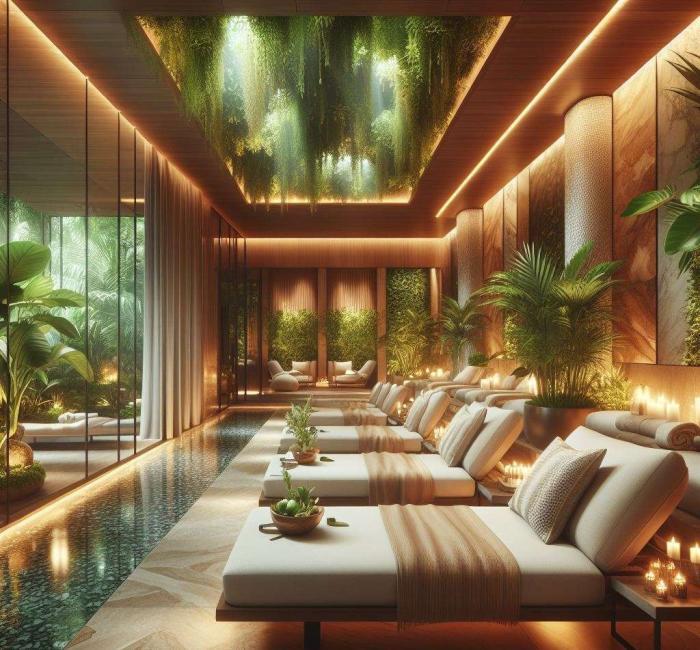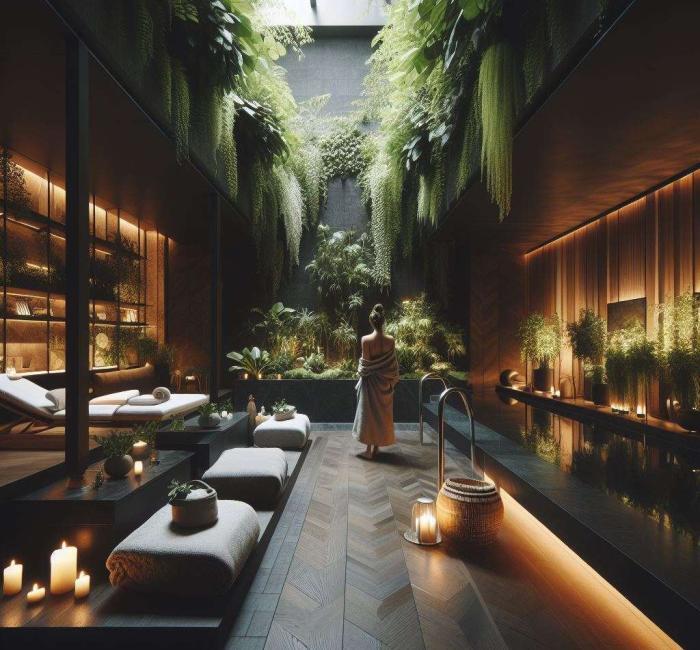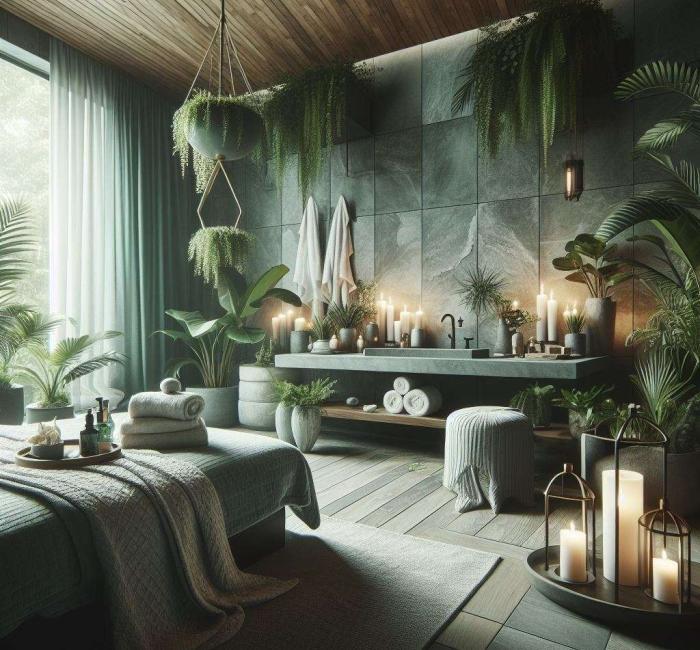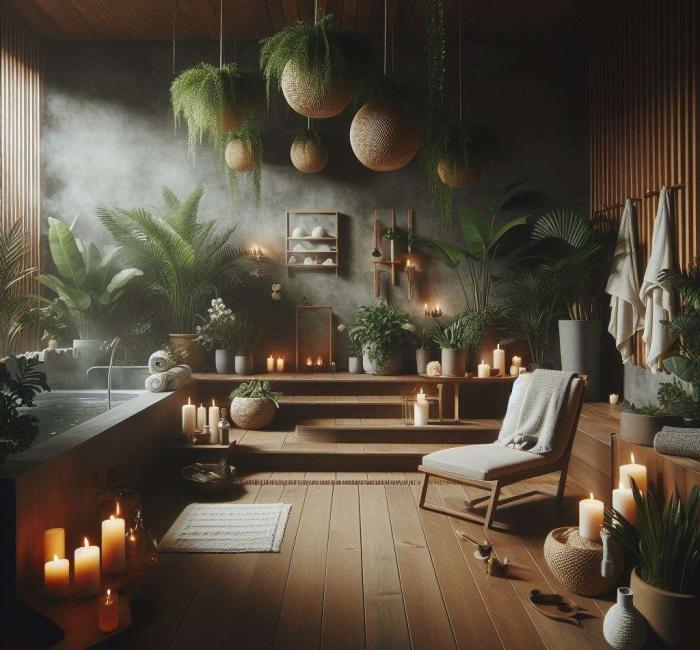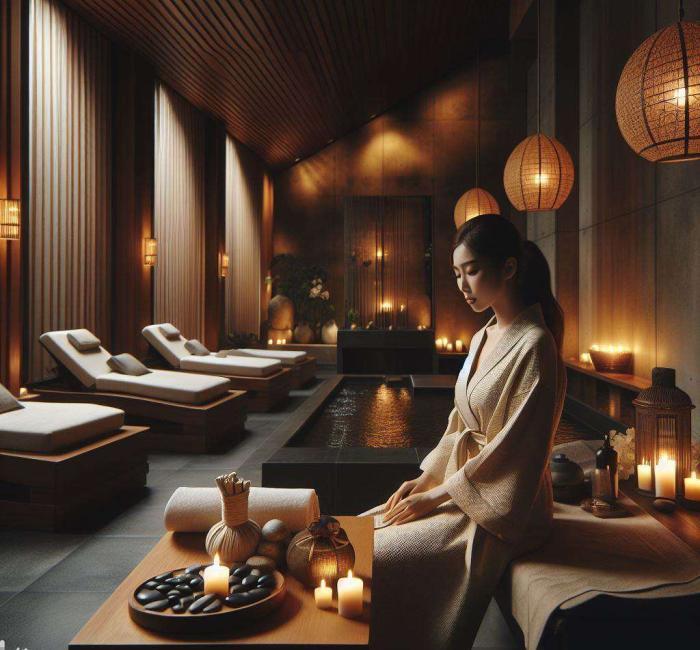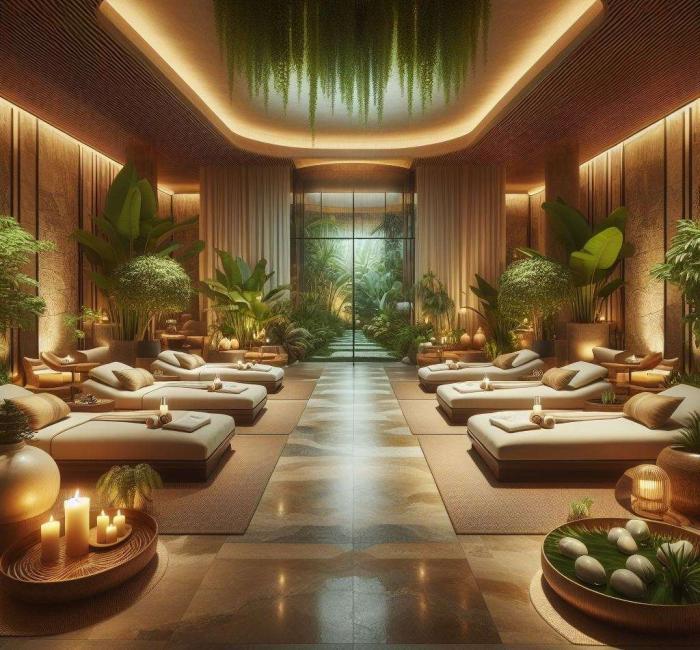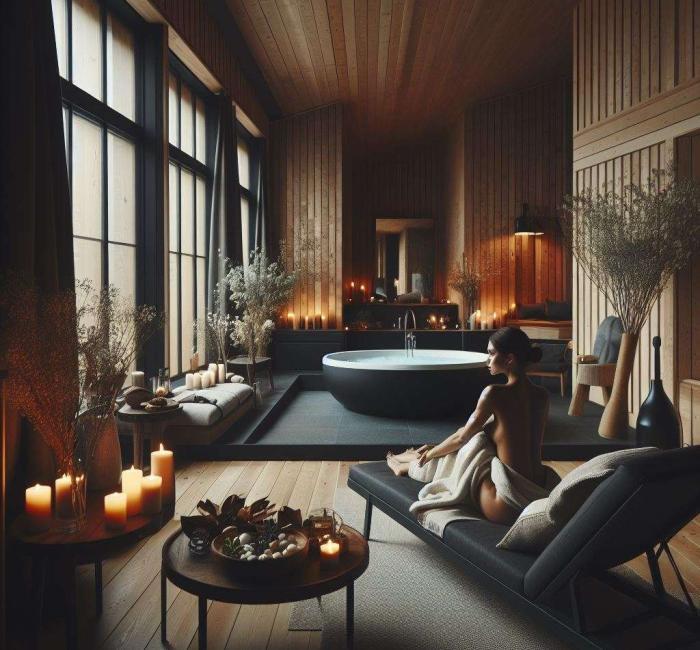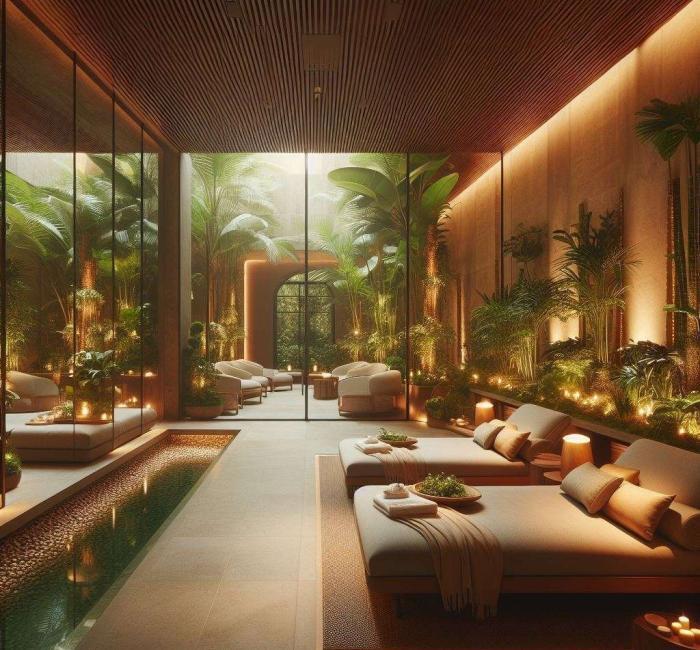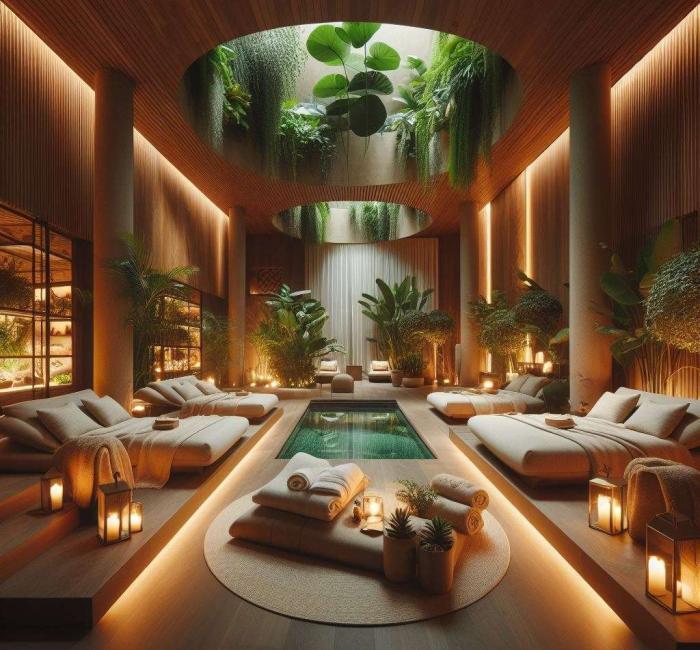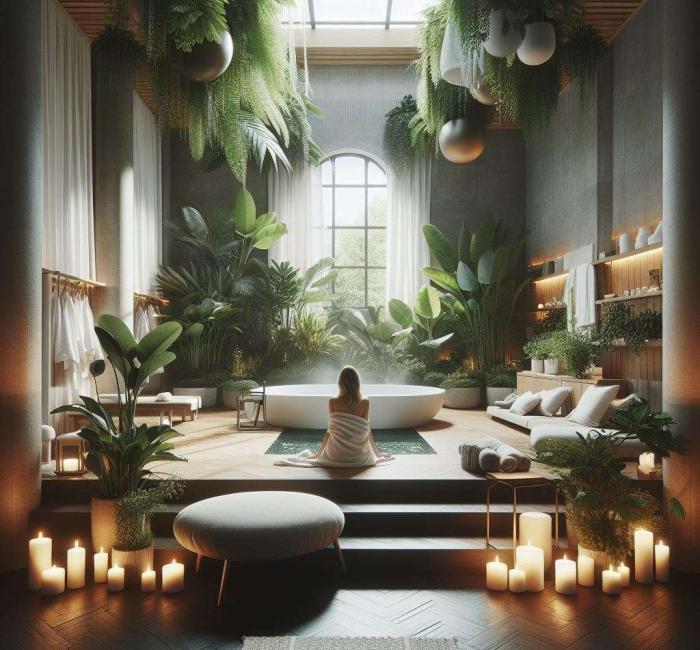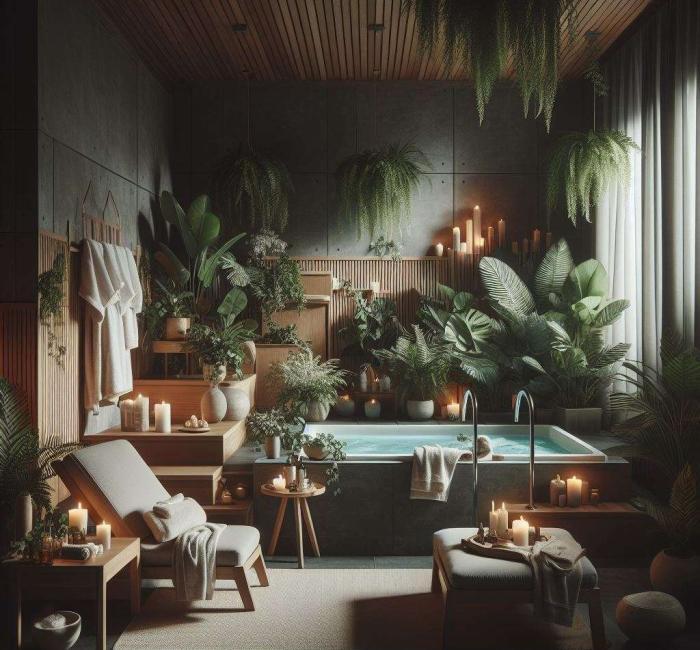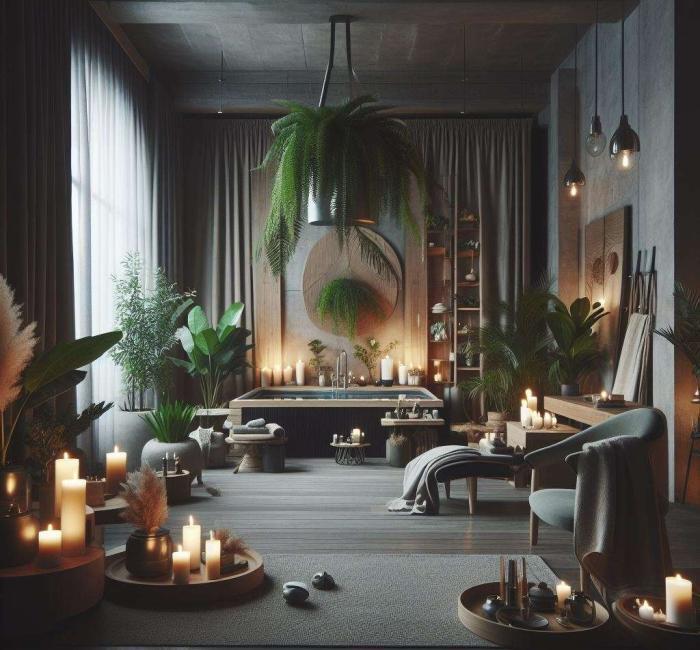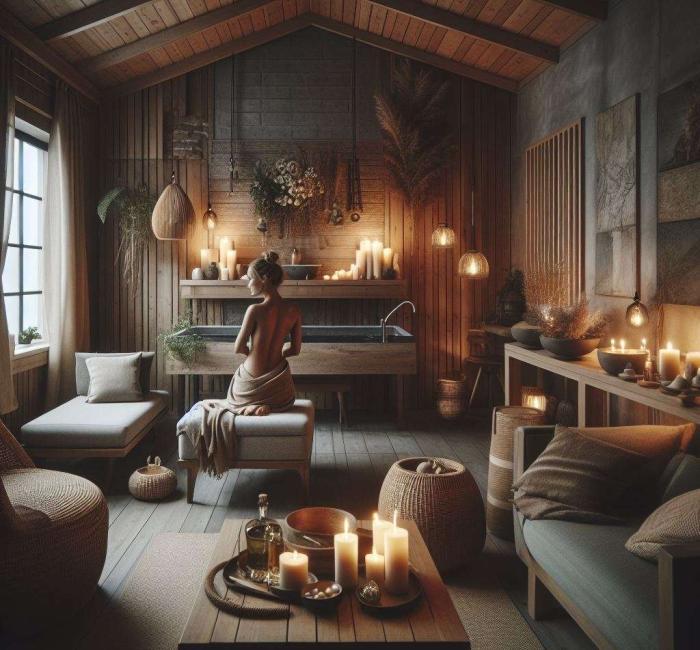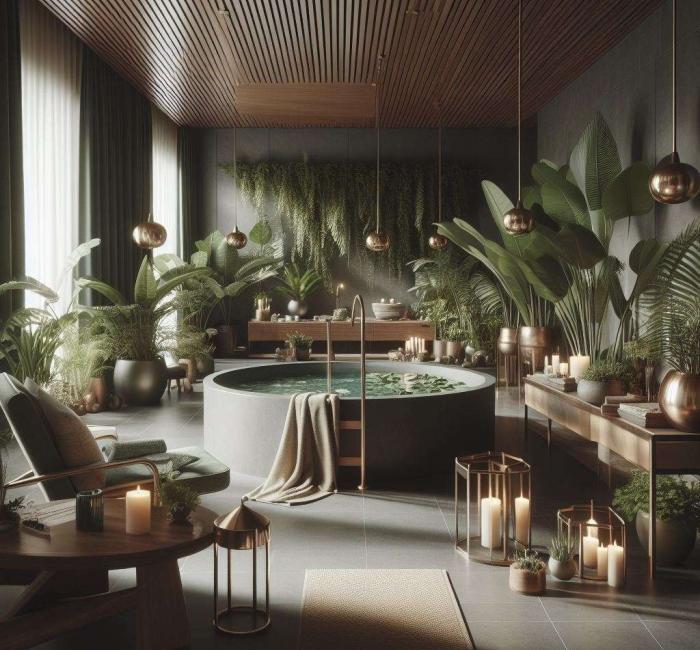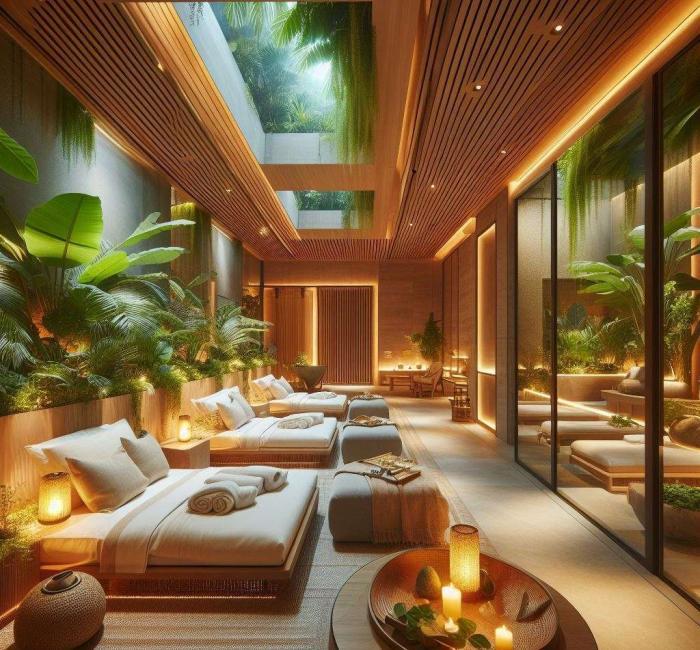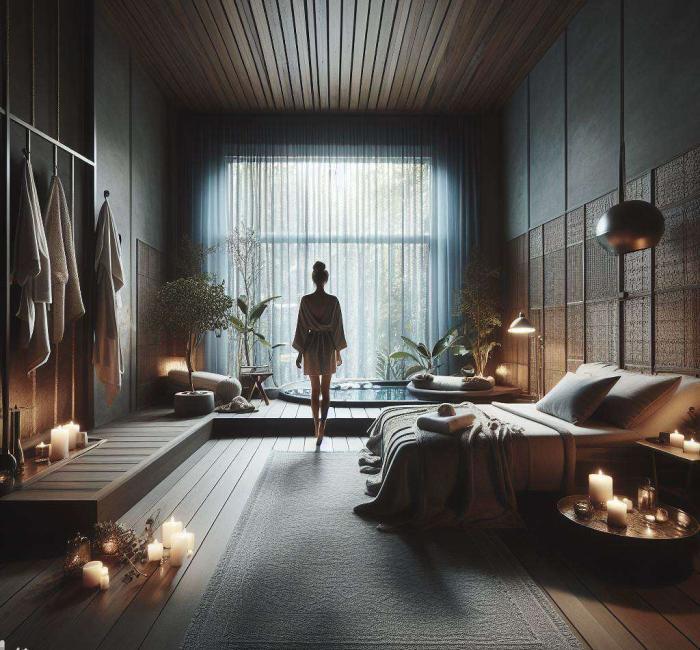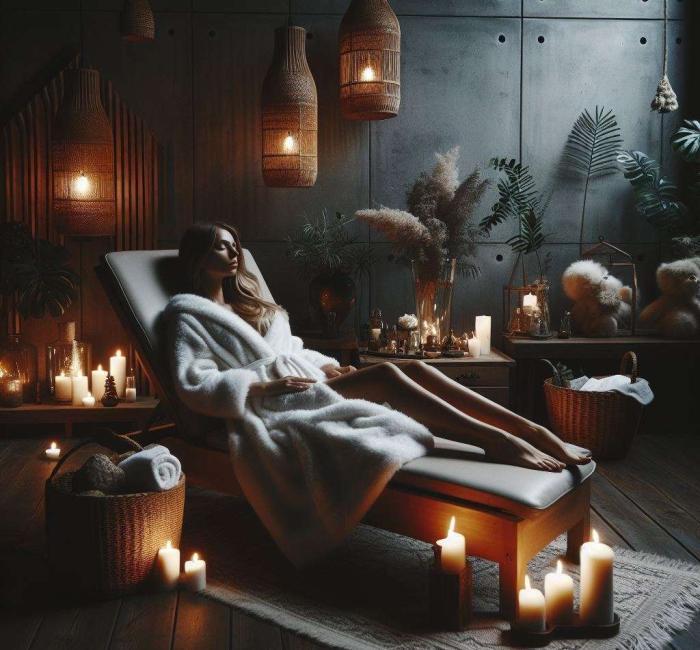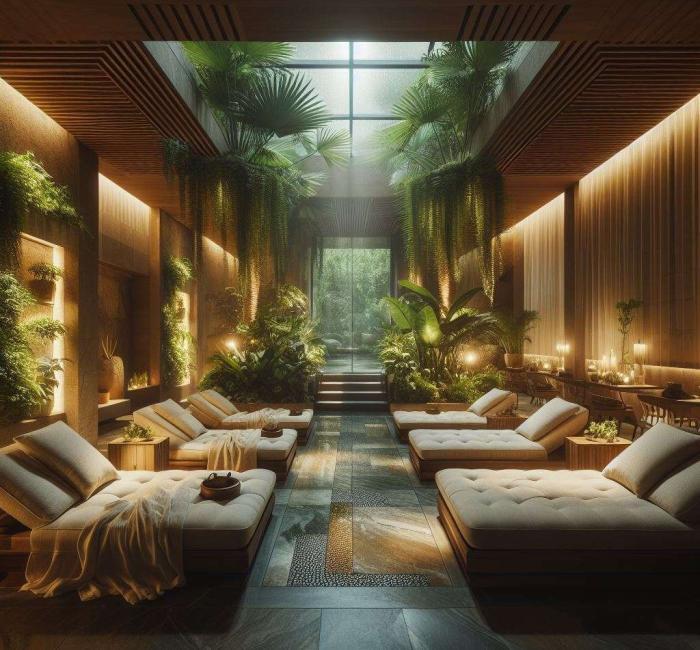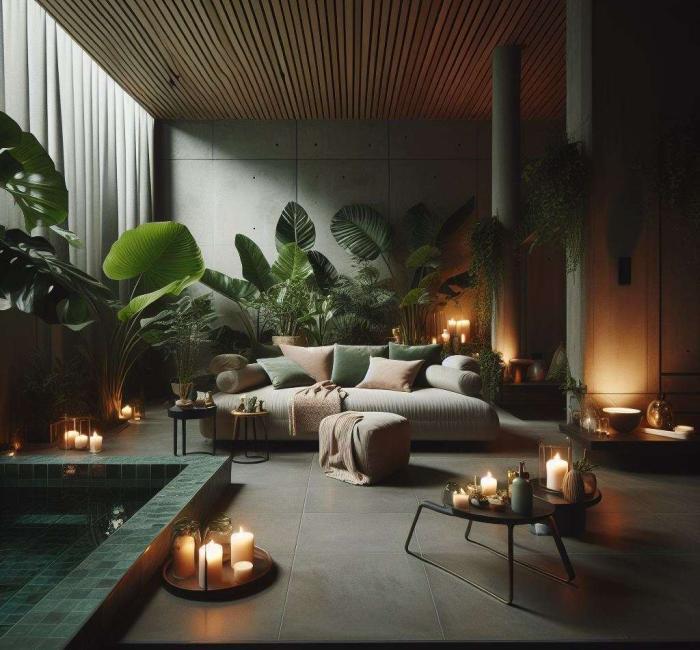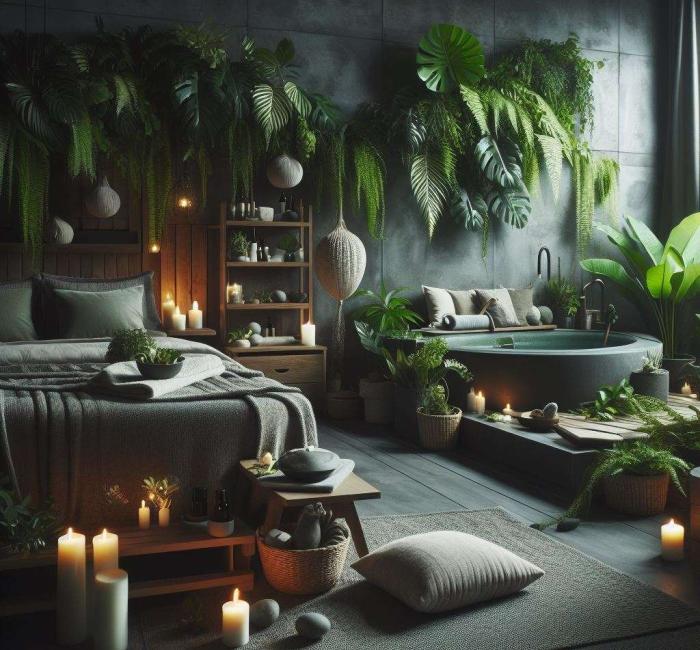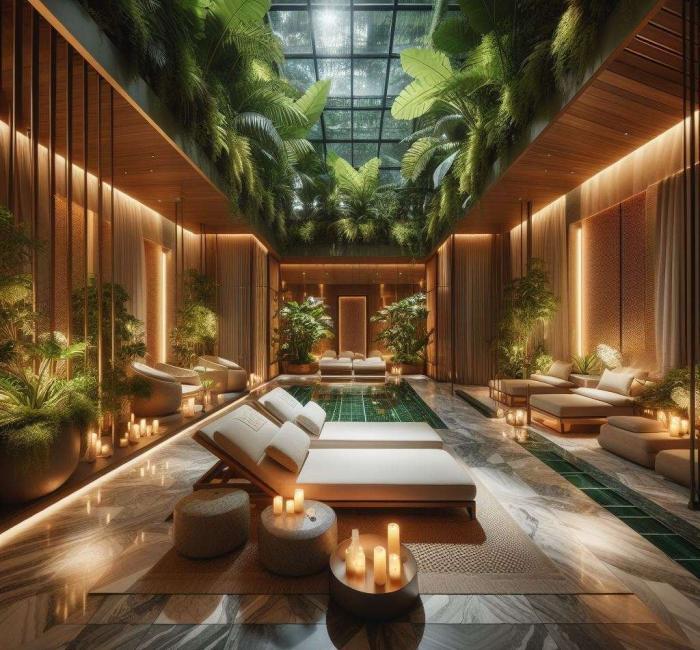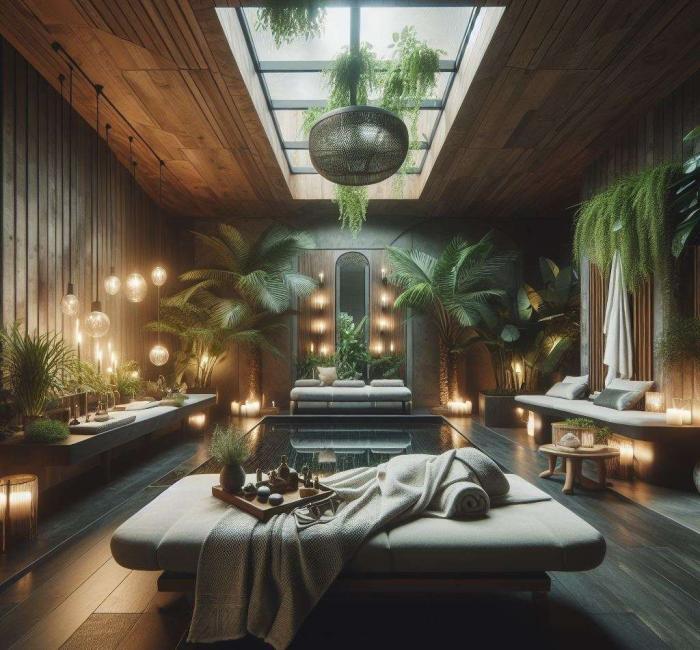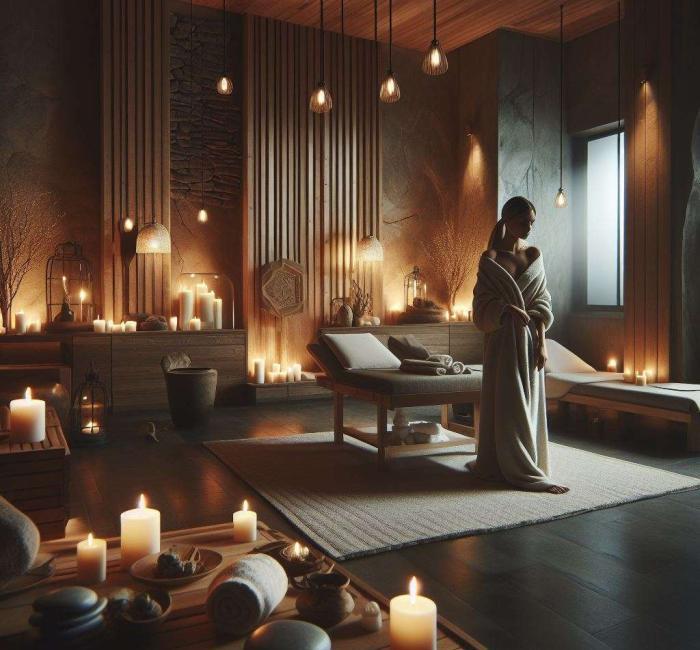AI Based Design
Spa Design
A spa design strives to create an oasis of calm and relaxation that appeals to the body, mind and soul in equal measure. In such a harmonious ambience, various aspects play a decisive role.
The interior design focuses on a warm and calming color palette, often dominated by earth tones, soft blues and greens, and neutral colors. Natural materials such as wood and stone create an organic atmosphere and convey a sense of elegance and well-being.
Lighting is central to spa design. Soft, indirect light creates a relaxed mood, while candlelight provides extra warmth. Dimmable light sources make it possible to adapt the atmosphere to the needs and preferences of the guests.
The selection of furniture and furnishings is made with comfort and functionality in mind. Comfortable loungers, soft cushions and high-quality textiles help guests to feel completely at ease.
The integration of natural elements such as plants, water fountains or stone elements reinforces the connection with nature and enhances the feeling of relaxation and rejuvenation.
A thoughtful room layout accommodates private areas for massages, facials, and other spa treatments. The layout of the rooms promotes a smooth flow while ensuring the privacy of the guests.
In addition to visual and haptic aesthetics, acoustic design also plays a role. Soothing music or sounds of nature help to create a relaxed atmosphere and forget about the stress of everyday life.
In the spa design, the pursuit of holism is at the forefront in order to offer guests a unique experience of relaxation. It combines tasteful design with functional elements to create an environment that appeals to the senses and is a retreat for wellness and regeneration.
What are important aspects in the design of a spa?
The design of a spa requires special attention to create a relaxed and welcoming environment. Here are important aspects to consider when designing a spa:
- Ambience and atmosphere:
- Creating a calm and relaxing atmosphere through the choice of colors, lighting and decorative elements.
- Use of natural materials and elements to create a harmonious environment.
- Privacy and quiet areas:
- Design of separate rooms or areas for various spa treatments to ensure guest privacy.
- Establishment of relaxation areas where guests can relax before or after treatments.
- Lighting:
- Use of soft, indirect lighting to create a calming atmosphere.
- Dimmable light sources for customizable lighting according to guests’ needs.
- Acoustics:
- Integration of sound-absorbing materials to create a quiet environment without disturbing noises.
- Choice of relaxing music or nature sounds to enhance the atmosphere.
- Natural elements:
- Incorporating plants, water functions, or other natural elements to create a connection with nature.
- Use of natural materials such as wood and stone.
- Comfortable furnishing:
- Selection of comfortable furniture and loungers for the treatment and relaxation areas.
- High-quality textiles and accessories to increase the comfort of guests.
- Aromatherapy:
- Incorporation of pleasant scents and aromas to stimulate the senses and create a relaxing atmosphere.
- Functionality:
- Efficient arrangement of spaces to ensure a smooth flow of spa treatments.
- Consideration of practical aspects such as changing areas and sanitary facilities.
- Sustainability:
- Selection of eco-friendly materials and technologies to promote sustainable practices.
- Brand:
- Integration of design elements that reflect the brand identity of the spa.
- Consistent design to create a consistent experience for guests.
The combination of these aspects helps to create a spa that is not only aesthetically pleasing but also offers a relaxing and immersive experience for guests.
